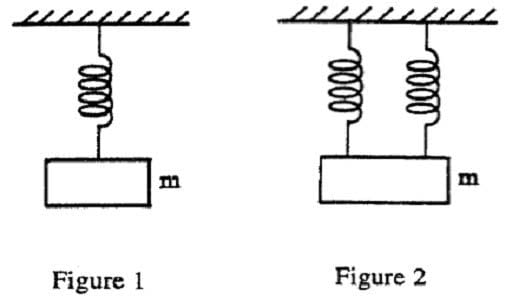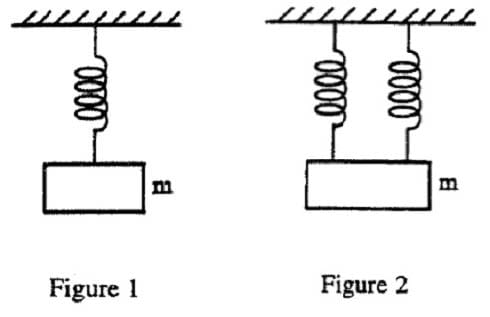Exam Details
Exam Code
:MCAT-TESTExam Name
:Medical College Admission Test: Verbal Reasoning, Biological Sciences, Physical Sciences, Writing SampleCertification
:Medical Tests CertificationsVendor
:Medical TestsTotal Questions
:812 Q&AsLast Updated
:Apr 16, 2025
Medical Tests Medical Tests Certifications MCAT-TEST Questions & Answers
-
Question 291:
A continuous spectrum of light, sometimes called blackbody radiation, is emitted from a region of the Sun called the photosphere. Although the continuous spectrum contains light of all wavelengths, the intensity of the emitted light is much greater at some wavelengths than at others. The relationship between the most intense wavelength of blackbody radiation and the temperature of the emitting body is given by Wien's law, λ = 2.9 x 106/T, where λ is the wavelength in nanometers and T is the temperature in kelvins.
As the blackbody radiation from the Sun passes through the cooler gases in the Sun's atmosphere, some of the photons are absorbed by the atoms in these gases. A photon will be absorbed if it has just enough energy to excite an electron from a lower energy state to a higher one. The absorbed photon will have an energy equal to the energy difference between these two states. The energy of a photon is given by E = hf = hc/λ where h = 6.63 x 10-34 J•s, Planck's constant, and c = 3 x 108 m/s, the speed of light in a vacuum.
The Sun is composed primarily of hydrogen. Electron transitions in the hydrogen atom from energy state n = 2 to higher energy states are listed below along with the energy of the absorbed photon:
Final Energy State Energy (x 10-19 J) n = 3
3.02
n = 4
4.08
n = 5
4.57 n = 6
4.84 n = ∞
5.44
Based on the data in the table, what is the approximate wavelength of a photon emitted in the electron transition from energy state n = 4 to energy state n = 3?
A. 5 nm
B. 30 nm
C. 100 nm
D. 2,000 nm
-
Question 292:
A continuous spectrum of light, sometimes called blackbody radiation, is emitted from a region of the Sun called the photosphere. Although the continuous spectrum contains light of all wavelengths, the intensity of the emitted light is much greater at some wavelengths than at others. The relationship between the most intense wavelength of blackbody radiation and the temperature of the emitting body is given by Wien's law, λ = 2.9 x 106 /T, where λ is the wavelength in nanometers and T is the temperature in kelvins.
As the blackbody radiation from the Sun passes through the cooler gases in the Sun's atmosphere, some of the photons are absorbed by the atoms in these gases. A photon will be absorbed if it has just enough energy to excite an electron from a lower energy state to a higher one. The absorbed photon will have an energy equal to the energy difference between these two states. The energy of a photon is given by E = hf = hc/λ where h = 6.63 x 10-34 J•s, Planck's constant, and c = 3 x 108 m/s, the speed of light in a vacuum.
The Sun is composed primarily of hydrogen. Electron transitions in the hydrogen atom from energy state n = 2 to higher energy states are listed below along with the energy of the absorbed photon:
Final Energy State Energy (x 10-19 J)
n = 3
3.02
n = 4
4.08
n = 5
4.57 n = 6
4.84 n = ∞
5.44
The energy absorbed by a hydrogen atom as its electron undergoes a transition from the n = 1 energy state to the n = ∞ state is: (Note: The n = 1 energy state is the ground state of hydrogen.)
A. infinite.
B. equal to the binding energy of the electron.
C. equal to the energy of a zero-frequency photon.
D. smaller than the energy absorbed in the n = 2 ton = transition.
-
Question 293:
If the noise level is increased by 30 decibels, what is the ratio of the new intensity to the original intensity?
A. 10
B. 30
C. 100
D. 1000
-
Question 294:
A given volume of a diprotic acid is completely neutralized by twice that volume of a 0.3 N NaOH solution. What is the molarity of the acid?
A. 0.15 M
B. 0.30 M
C. 0.60 M
D. 1.20 M
-
Question 295:
A fireman of mass m slides down a vertical pole with an average acceleration a. If the acceleration due to gravity is g, what is the average frictional force exerted by the fireman?
A. mg
B. m(g + a)
C. m(g – a)
D. ma
-
Question 296:
Which of the following is NOT an intermolecular force?
A. Dispersion forces
B. Resonance
C. Hydrogen bonding
D. Dipole interactions
-
Question 297:
The simple harmonic motion of a mass suspended from vertical springs is investigated in two experiments. The springs used in both experiments have a spring constant k and a natural length L0. The material used to make the springs has a
Young's modulus of 2 x 1011 Pa.
In the first experiment a mass m is suspended from a spring. The mass stretches the spring to a new length L, called the equilibrium length.
In the second experiment the mass m is suspended from two identical springs as shown in Figure 2 below. When the mass m is in equilibrium, each spring is stretched from its natural length by the same amount xe.
In both experiments the masses of the springs are negligible, and the elastic limits of the springs are never exceeded.

In the first experiment, when a 5-kg mass is oscillating, the frequency of oscillation is 2 Hz. What is the value of the spring constant?
A. 5/2 N/m
B. 20 N/m
C. 402 N/m
D. 802 N/m
-
Question 298:
The simple harmonic motion of a mass suspended from vertical springs is investigated in two experiments. The springs used in both experiments have a spring constant k and a natural length L0. The material used to make the springs has a
Young's modulus of 2 x 1011 Pa.
In the first experiment a mass m is suspended from a spring. The mass stretches the spring to a new length L, called the equilibrium length.
In the second experiment the mass m is suspended from two identical springs as shown in Figure 2 below. When the mass m is in equilibrium, each spring is stretched from its natural length by the same amount xe.
In both experiments the masses of the springs are negligible, and the elastic limits of the springs are never exceeded.

The two springs in Experiment 2 are replaced by a single spring having a spring constant k' such that the equilibrium length xe does not change. What is the ratio of k' to k?

A. Option A
B. Option B
C. Option C
D. Option D
-
Question 299:
The simple harmonic motion of a mass suspended from vertical springs is investigated in two experiments. The springs used in both experiments have a spring constant k and a natural length L0 . The material used to make the springs has a
Young's modulus of 2 x 1011 Pa.
In the first experiment a mass m is suspended from a spring. The mass stretches the spring to a new length L, called the equilibrium length.
In the second experiment the mass m is suspended from two identical springs as shown in Figure 2 below. When the mass m is in equilibrium, each spring is stretched from its natural length by the same amount xe.
In both experiments the masses of the springs are negligible, and the elastic limits of the springs are never exceeded.

If the spring in Experiment 1 was suspended from the ceiling of an elevator accelerating with acceleration a, how would the equilibrium length of the spring compare to the equilibrium length of the spring when the elevator is stationary?
A. The equilibrium length of the spring would be greater when the elevator is accelerating upward.
B. The equilibrium length of the spring would be greater when the elevator is stationary.
C. The equilibrium length of the spring would be greater when the elevator is accelerating downward with acceleration smaller than the acceleration due to gravity.
D. The equilibrium length of the spring doesn't depend on the acceleration of the elevator.
-
Question 300:
The simple harmonic motion of a mass suspended from vertical springs is investigated in two experiments. The springs used in both experiments have a spring constant k and a natural length L0. The material used to make the springs has a Young's modulus of 2 x 1011 Pa.
In the first experiment a mass m is suspended from a spring. The mass stretches the spring to a new length L, called the equilibrium length.
In the second experiment the mass m is suspended from two identical springs as shown in Figure 2 below. When the mass m is in equilibrium, each spring is stretched from its natural length by the same amount xe.
In both experiments the masses of the springs are negligible, and the elastic limits of the springs are never exceeded.

In the first experiment, what is the mass of the object hanging from the spring?
A. kL/g
B. kL0/g
C. k(L-L0)/g
D. k/g
Related Exams:
Tips on How to Prepare for the Exams
Nowadays, the certification exams become more and more important and required by more and more enterprises when applying for a job. But how to prepare for the exam effectively? How to prepare for the exam in a short time with less efforts? How to get a ideal result and how to find the most reliable resources? Here on Vcedump.com, you will find all the answers. Vcedump.com provide not only Medical Tests exam questions, answers and explanations but also complete assistance on your exam preparation and certification application. If you are confused on your MCAT-TEST exam preparations and Medical Tests certification application, do not hesitate to visit our Vcedump.com to find your solutions here.